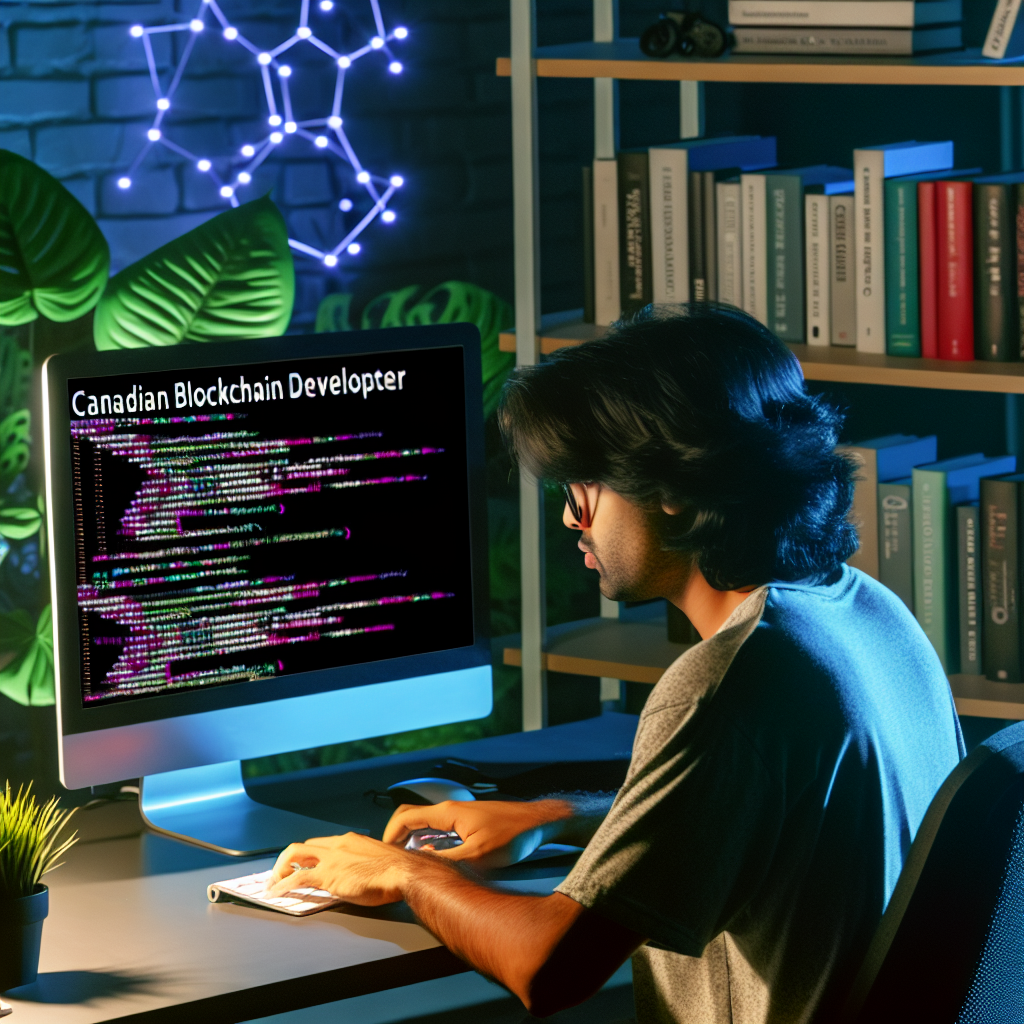Understanding Blockchain Technology
What is Blockchain?
Blockchain is a decentralized digital ledger technology.
It records transactions across multiple computers.
This prevents unauthorized changes to the data.
Moreover, blockchain enhances security and transparency.
Core Components of Blockchain
Blockchain consists of several key elements.
These include nodes, blocks, and chains.
Nodes are individual computers that maintain the network.
Blocks contain transaction data, while chains link them together.
The Role of Cryptography
Cryptography plays a vital role in blockchain technology.
It ensures the integrity and authenticity of transaction data.
Public and private keys help secure transactions effectively.
Consensus Mechanisms
Consensus mechanisms are crucial for blockchain operations.
They ensure all network participants agree on the data.
Proof of Work and Proof of Stake are common mechanisms.
Each has its own strengths and weaknesses.
Types of Blockchains
There are three main types of blockchains.
Public blockchains are open to anyone.
Private blockchains restrict access to specific users.
Finally, consortium blockchains are managed by a group.
Applications of Blockchain Technology
Blockchain technology supports various applications.
It powers cryptocurrencies like Bitcoin and Ethereum.
Additionally, it is used in supply chain management.
Healthcare and finance sectors also benefit from its capabilities.
Key Programming Languages and Tools for Decentralized Application Development
Essential Programming Languages
JavaScript is crucial for developing decentralized applications.
Developers use JavaScript for building user interfaces.
Unlock Your Career Potential
Visualize a clear path to success with our tailored Career Consulting service. Personalized insights in just 1-3 days.
Get StartedAdditionally, frameworks like React and Vue enhance user interaction.
Solidity is the primary language for Ethereum smart contracts.
It allows developers to create and deploy smart contracts on the blockchain.
Rust is gaining popularity for its performance and safety features.
Many blockchain platforms support Rust for building applications.
Python is also valuable due to its simplicity and extensive libraries.
Blockchain Development Frameworks
Truffle is a popular framework for Ethereum development.
It streamlines the process of writing, testing, and deploying smart contracts.
Hardhat provides a flexible environment for Ethereum developers.
It simplifies testing and debugging of smart contracts.
Additionally, Brownie serves Python developers targeting Ethereum.
These frameworks enhance productivity and efficiency significantly.
Decentralized Storage Solutions
IPFS (InterPlanetary File System) enables decentralized file storage.
It allows applications to store and share data securely.
Arweave offers permanent data storage options for developers.
Both solutions enhance the scalability of decentralized applications.
Development Tools and Environments
Node.js is essential for creating server-side applications.
Developers leverage Node.js for building scalable network applications.
Metamask helps manage user identities and connect wallets.
It facilitates interaction between users and decentralized applications.
Ganache allows developers to create a personal Ethereum blockchain.
Testing can happen in a safe environment without risks.
Testing and Debugging Tools
Remix is an online integrated development environment for Ethereum.
It enables developers to write and debug smart contracts in Solidity.
MythX offers advanced security analysis for Ethereum-based smart contracts.
This tool helps identify vulnerabilities early in the development process.
Using these tools ensures high-quality, secure applications.
The Role of Smart Contracts in Decentralized Applications
Understanding Smart Contracts
Smart contracts are self-executing contracts with terms directly written into code.
They automatically enforce agreement terms without human intervention.
Furthermore, they provide a secure and reliable way to facilitate transactions.
Benefits of Using Smart Contracts
Smart contracts reduce the need for intermediaries in transactions.
This leads to lower transaction costs and faster processes.
Additionally, they enhance trust among parties by ensuring transparency.
The immutability of smart contracts protects against tampering or fraud.
Applications in Decentralized Applications
Smart contracts play a crucial role in decentralized finance (DeFi) applications.
They enable automated trading and liquidity provision in platforms like Uniswap.
Moreover, they facilitate decentralized governance in projects such as MakerDAO.
Integration with Blockchain Technology
Smart contracts are deployed on blockchain networks for security and transparency.
Ethereum remains the most widely used platform for developing smart contracts.
However, other blockchains, like Binance Smart Chain, also support them.
Challenges and Considerations
Despite their advantages, smart contracts are not without challenges.
One major issue is the potential for coding errors that can lead to vulnerabilities.
Moreover, legal recognition and regulatory compliance pose significant hurdles.
Future of Smart Contracts in DApps
The future of smart contracts in decentralized applications looks promising.
As technology matures, more industries are likely to adopt them.
This could lead to innovative DApps transforming traditional business models.
Gain More Insights: Common Challenges Faced by Blockchain Developers Today
Best Practices for Designing User-Friendly DApps
Focusing on User-Centered Design
User-centered design prioritizes the needs of users above all else.
This approach ensures a more intuitive experience for your DApp’s audience.
Start by researching user behavior and preferences.
Consider conducting surveys or interviews with potential users.
Gather insights on their expectations and pain points.
Simplifying Navigation
Clear navigation greatly enhances user experience.
Use familiar design elements that users can easily understand.
Organize information logically and avoid clutter.
Employ progressive disclosure to present advanced features gradually.
Providing Comprehensive Onboarding
A good onboarding experience helps users become comfortable with your DApp.
Use tutorials, tooltips, and interactive guides to assist newcomers.
Clearly explain the functionality of your DApp.
Consider offering a demo mode for first-time users.
Ensuring Mobile Responsiveness
Many users access DApps through mobile devices.
Design your DApp to be fully responsive across various screen sizes.
Test your DApp on different devices to ensure consistency.
Optimize performance to reduce loading times on mobile networks.
Utilizing Clear Language
Use simple, direct language to communicate with users.
Avoid jargon or technical terms that might confuse them.
Offering multilingual support can widen your audience reach.
This approach promotes better understanding and engagement.
Encouraging User Feedback
User feedback is essential for continuous improvement.
Implement easy ways for users to share their thoughts.
Monitor feedback channels regularly for insights and suggestions.
Act on feedback to create a more satisfactory user experience.
Discover More: Steps to Becoming a Certified ERP Consultant in Canada
Security Considerations in Decentralized Application Development
Understanding Security Risks
Security is a critical aspect of decentralized application development.
Developers must be aware of potential vulnerabilities.
Common risks include smart contract exploits and data breaches.
Furthermore, user privacy is often a significant concern.
Regular security assessments can help identify these risks.
Implementing Security Best Practices
Utilizing secure coding practices is essential for developers.
Ensure you validate and sanitize all inputs.
Moreover, using established libraries can prevent common vulnerabilities.
Implementing multi-signature wallets adds an extra layer of security.
For critical functions, conduct thorough code audits.
Monitoring and Responding to Threats
Establishing robust monitoring systems is necessary for security.
Real-time monitoring can help detect unusual activity quickly.
Incident response plans should be in place to address breaches.
Developers must stay informed about the evolving threat landscape.
Community engagement helps share knowledge about potential threats.
Regulatory Compliance
Understanding regulatory requirements is crucial for developers.
Ensure compliance with relevant data protection laws.
Failure to comply can result in significant penalties.
Additionally, following industry-wide standards can enhance security.
Regularly review and update policies to adapt to regulations.
Educating Users About Security
User education plays a vital role in application security.
Encourage users to use strong passwords and enable two-factor authentication.
Providing resources on security best practices fosters user confidence.
For example, users should be aware of phishing attempts.
Ultimately, security is a shared responsibility between developers and users.
You Might Also Like: The Role of Blockchain in Building Transparent Systems

Integrating Decentralized Storage Solutions into Your DApp
Understanding Decentralized Storage
Decentralized storage is key for modern decentralized applications.
It offers enhanced security and data integrity compared to traditional methods.
Additionally, it reduces reliance on central servers and single points of failure.
Benefits of Using Decentralized Storage
One significant advantage is data redundancy across multiple locations.
This redundancy ensures that data remains accessible even if a node fails.
Moreover, users enjoy increased privacy, as data is not stored in a central repository.
Popular Decentralized Storage Solutions
Numerous options exist to implement decentralized storage in your DApp.
- IPFS (InterPlanetary File System) is a popular choice for storing and sharing files.
- Filecoin complements IPFS by offering incentivized storage solutions.
- Storj employs blockchain technology to create a secure and decentralized cloud storage system.
Implementing Decentralized Storage in Your DApp
Integrating decentralized storage into your DApp requires careful planning.
First, identify the types of data your application will handle.
Next, choose the appropriate storage solution based on your requirements.
For example, IPFS is ideal for large files, while Filecoin works best for incentivized storage.
Interfacing with Storage Solutions
Most decentralized storage solutions provide APIs for integration.
Use these APIs to upload, retrieve, and manage your data seamlessly.
Ensure to handle exceptions and errors appropriately for a robust user experience.
Best Practices for Using Decentralized Storage
Prioritize security by encrypting sensitive data before storage.
Furthermore, regularly backup critical data stored in decentralized networks.
Lastly, keep your users informed about data handling practices.
Explore Further: How to Excel in ERP Software Implementation Projects
Deploying and Testing DApps on Various Blockchain Networks
Understanding Different Blockchain Networks
Blockchain networks vary in architecture and purpose.
Some are public, while others are private or consortium-based.
Ethereum remains one of the most popular for DApp development.
However, other platforms like Binance Smart Chain and Polkadot also offer unique features.
Familiarizing yourself with these differences is crucial.
Tools for Deployment
Several tools exist to assist in the deployment of DApps.
Truffle is a widely used framework for Ethereum development.
It simplifies the development process and includes testing features.
Hardhat is another popular choice, offering a flexible development environment.
Leveraging these tools can enhance your productivity significantly.
Testing Strategies for DApps
Testing is a vital aspect of DApp development.
It ensures your application behaves as expected under various conditions.
Start by writing unit tests for individual smart contracts.
Use frameworks like Mocha or Chai for comprehensive testing.
Integration tests will verify the interaction between different components.
Common Testing Frameworks
Several well-established frameworks assist in testing DApps.
- Truffle provides built-in testing capabilities.
- Hardhat offers extensive plugin support for testing.
- Brownie is ideal for Python developers in the Ethereum ecosystem.
Select the framework that aligns with your development style.
Deploying to Test Networks
Before launching on the mainnet, utilize test networks.
Networks like Ropsten and Rinkeby simulate the Ethereum environment.
These networks allow you to test your DApp without financial risks.
Additionally, Binance Smart Chain has its testnet, which you can use.
Deploying to these networks helps identify issues early.
Monitoring and Iteration
Once deployed, monitor your DApp continuously.
Track performance metrics and user feedback for improvements.
Use analytics tools to gather data on user interactions.
Iterate on your application based on this data.
Regular updates can enhance user satisfaction significantly.
The Future of Decentralized Applications: Trends and Predictions
Increased Focus on User Privacy
Decentralized applications will prioritize user privacy more than ever.
Developers will create new frameworks to protect user data.
Moreover, advancements in encryption techniques will enhance security.
Greater Interoperability Among Blockchains
The trend of interoperability will reshape decentralized applications.
Developers will build bridges connecting disparate blockchain networks.
This will facilitate seamless transactions and data sharing.
As a result, users will benefit from a more integrated ecosystem.
Growth of Decentralized Finance
Decentralized finance will continue its rapid expansion.
More users will explore DeFi platforms for financial services.
Innovations in smart contracts will enable new financial products.
Consequently, traditional finance may face increased competition.
Enhanced User Experience Through Design
Developers will focus on improving the user experience in dApps.
User-friendly interfaces will attract more participants.
Simple onboarding processes will reduce friction for newcomers.
In this way, decentralized applications will appeal to a wider audience.
The Rise of Tokenization
Tokenization will play a significant role in decentralized applications.
Developers will create unique tokens for various assets.
This includes real estate, art, and intellectual property.
New token standards will emerge, enhancing functionality and liquidity.
Emphasis on Regulation and Compliance
Regulatory considerations will shape the development of decentralized applications.
Developers must navigate complex legal frameworks worldwide.
Compliance will become essential for widespread adoption.
Thus, systems will implement features to ensure regulatory adherence.
Innovative Use Cases Beyond Cryptocurrency
New applications will extend beyond financial transactions.
Industries will explore blockchain for supply chain management.
Healthcare systems will leverage decentralized records for patient data.
Consequently, use cases will multiply across various sectors.
Additional Resources
Tarek Ahmed – Chegg Inc. | LinkedIn
Blockchain-based decentralized reputation system in E-commerce …




